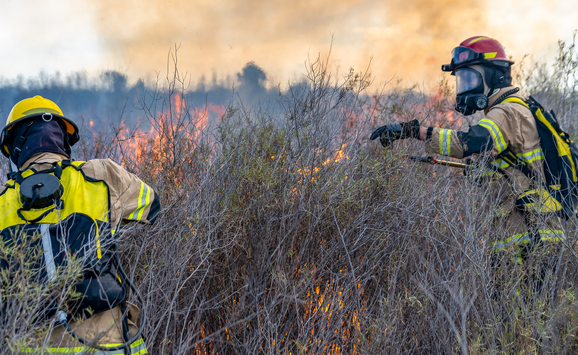Fire, floods, coastal storms, drought—the list of natural disasters that invoke billions in damage to communities and their economies is long and persistent. The tally of costs from Hurricane Sandy in the Northeast continues to mount, mirroring the multi-billion dollar price tags for other hurricane disasters. Yet, year after year, the US Army Corps of Engineers spends millions of dollars to replenish beaches, supporting the continued presence and expansion of coastal communities. And federal agencies spend between $1 billion and $2 billion annually on fire suppression and efforts to remove dangerous underbrush and trees from overly dense forests. Billions more are spent on flood protection. Should federal taxpayers continue to foot the bill for measures to protect communities in areas at high risks from natural disasters?
A recent National Public Radio story resurrects this long-standing debate, focusing on federal taxpayer costs to replenish beaches—year after year—as bulwarks against storm damage. Proponents of this spending point to the significant protections beach replenishment provides, and hundreds of millions of dollars in avoided storm damage. Critics say such spending just keeps people living in dangerous places, luring them into a sense of security and shielding them from the costs of their decisions. Similar arguments are made against the billions of dollars spent on fighting forest fires.
But this set of for-and-against choices overly simplifies the challenges—whether along coasts or in areas adjacent to forests and grasslands subject to wildland fire. Efforts such as beach replenishment and wildland fire suppression may contribute to perverse incentives to locate or remain in high-risk areas. Yet such measures can be cost-effective ways to reduce risks. This latter point is especially important, since many communities are already in these high-risk areas, and costs of relocation could be extremely high.
Thus, the nation and these communities often face the choice of doing nothing--and experiencing extremely high costs of damage, or actually taking actions to mitigate risks--such as, for example, beach nourishment, and, in areas near forests, thinning forests to reduce risks and engaging in fire suppression where communities are threatened. Some research suggests damages are much lower in communities that have protected coastal dunes or supported beach replenishment. For wildland fires, early fire suppression responses when fires erupt can significantly reduce the subsequent extent and consequences of fire.
But other considerations are also in play. Take wildland fire. For communities near forests, risks of catastrophic wildland fires are, themselves, partly a product of former federal decisions to put out every fire. These decisions failed to recognize that many of these areas require fire to sustain forest health. As a result, forests have become unnaturally dense with brush and closely spaced trees, causing dramatic changes in fire behavior and significantly increasing risks to adjacent communities. This context complicates the “who pays for what” question with respect to forest and fire management.
These sorts of complicating details accompany most cases where communities face risks of natural hazards. What is the extent of the risk? Has it changed over time? Why? What are the relative costs of doing nothing, mitigating risks (and using which measures), or relocating whole communities? Who pays the bill? Before rejecting ideas like beach replenishment or forest and fire management, these devilish details deserve careful consideration.





